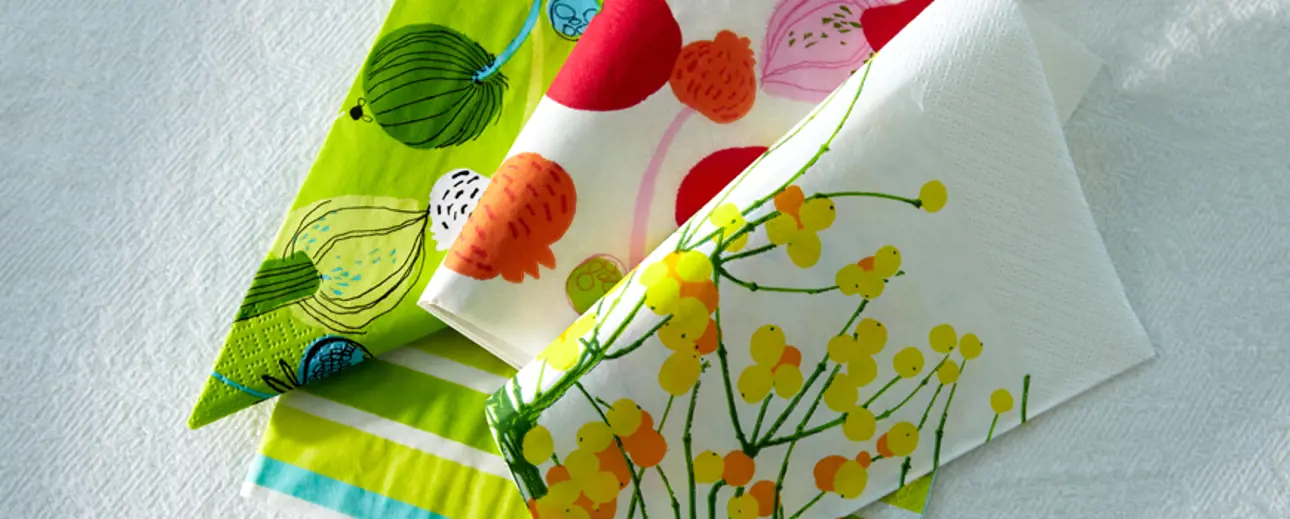The story of tissue: the evolution of a vital consumer product
Toilet and facial tissue is something that most of us take for granted, but many may be surprised to learn they are actually relatively new inventions. However, while tissue paper itself dates back less than a century, there is a much longer record of humans relying on paper for personal cleansing.

It perhaps comes as little surprise that the Chinese, credited with first developing the pulp papermaking process more than 2000 years ago, are also believed to be the first to use paper for personal cleansing. The first recorded use of toilet paper dates back to 6th century China. During the Tang Dynasty, three-hundred years later, an Arab traveler in the region commented that the Chinese “do not wash themselves with water when they have done their necessities; but they only wipe themselves with paper.”
Still, it would take several centuries before the world saw anything resembling toilet paper as we know it today. For many years, people turned to other paper instead. Following the rise of printing, for example, many people relied on repurposed newspapers and books.
The introduction of toilet paper as a commercial product did not occur until 1857. In that year, American inventor Joseph Gayetty began selling packets of paper in individual sheets, marketed as “Gayetty’s Medical Paper.” Others began to eventually produce this variety of brown, rough and thin paper in countries around the world. In fact, many readers may have personal memories of this toilet paper, which could still be found in certain parts of Europe as late as the 1970s.
Folds that changed everything
The first tissue products as we’d recognize them today were invented and produced by the American paper manufacturer Kimberly-Clark, who developed cellulose as a replacement for cotton in sanitary products during World War I. Their major innovation was the creping process, in which paper was “micro-folded” in the course of production. This breaks down the rigidity of the paper and increases the volume, making it both softer and more absorbent than paper created by Joseph Gayetty 60 years earlier.
In 1920, Kimberly-Clark released the world’s first commercially available tissue product, the sanitary pad Kotex. It was made possible thanks to the new creping process and the work of two men at the company: Frank Sensenbrenner and a young Austrian immigrant named Ernst Mahler. By layering several sheets of tissue, they developed a soft pillow with much greater absorbency than the traditional cotton wool. Four years later, Kimberly-Clark followed the success of Kotex with the disposable handkerchief Kleenex, which remains the market-leading brand for facial tissues today.
Customer experience drives development
In the years following the advent of the creping process, tissue products quickly became popular with consumers, leading many manufacturers to take notice. From the United States, tissue production expanded to Europe in the first half of the twentieth century and ultimately to every other part of the globe as well.
Tissue production continually evolved throughout this period to keep up with increased market demand and to provide an improved customer experience. As today, manufacturers worked to meet shifting consumer tastes, and tissue industry trends came and went along with other consumer fads. One memorable example was the pastel-colored toilet rolls designed to match bathroom interiors that gained popularity in the 1960s.
However, a constant in development has been the search for production methods that secure paper that is both strong and soft. For toilet as well as facial tissue, strength and absorbability is essential to ensuring the paper can do the intended job while keeping hands clean and dry. At the same time, it also needs to avoid causing discomfort in delicate areas of the body. As tissue use has become more widespread – first in the Americas and Europe and more recently in other parts of the world – consumers have come to demand increasingly softer and stronger sheets.
Valmet’s role in tissue history
Valmet began producing its first tissue paper machines in the years after the Second World War, but it was not until the late 1960s that the company made its first mark in the history of tissue production. This came with the introduction of new forming technology that at the time represented a breakthrough in the preparation of base paper for tissue products.
In the decades since, Valmet has been responsible for new production innovations that have resulted in higher standards for both product quality and manufacturing efficiency. Today the challenges in the tissue industry are greater than ever, with growing demand in maturing markets and the need for more sustainable production globally. Thanks to close cooperation with tissue makers around the world, Valmet continues to offer new, flexible solutions for stronger and softer tissue produced with greater resource efficiency.
Find this story interesting? You can read more about tissue at www.tissuestory.com. If you want to know more about how Valmet helps its customers become best in tissue, go here to get information about our products and services.
Category: Tissue in focus
Industry level: Introductory
Est. read time: 4 minutes
Summary: Discover the history of tissue in an article that explores how the use and production of paper for personal cleansing has evolved over centuries.
More articles and insights from the tissue industry




